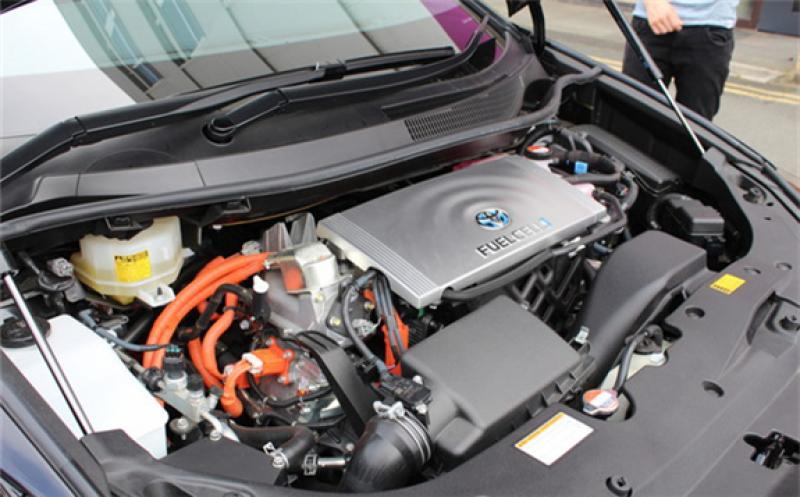
Fuel cells are used, most commonly in vehicles and homes, to convert chemical energy into electrical energy (Credit: Geograph/Richard Hoare)
Scientists have discovered a new family of chemical compounds that could turbo-charge fuel cell technology and help clean up the transport industry. University of Aberdeen researchers say the compounds – collectively known as hexagonal perovskites – could be the key to unlocking the potential of ceramic fuel cells.
Ceramic fuel cells are regarded as highly-efficient devices that convert chemical energy into electrical energy and produce very low emissions in cars and homes powered by hydrogen, providing a green alternative to fossil fuels.
Chemical compound discovery ‘like finding a needle in a haystack’
Professor Abbie McLaughlin, director of research in the university’s Department of Chemistry, led the study, which was published today (2 March) in a paper titled High oxide and proton conductivity in a disordered hexagonal perovskite in the journal Nature Materials.
She said: “Ceramic fuel cells are highly efficient, but the problem is they operate at really high temperatures – above 800C.
“Because of that they have a short lifespan and use expensive components.
“For a number of years we’ve been looking for compounds that might overcome these issues in the relatively unexplored hexagonal perovskite family, but there are specific chemical features required which are hard to find in combination.
“For example, you need a chemical compound with very little electronic conductivity which is stable in both the hydrogen and oxygen environments of the fuel cell.
“What we have discovered here is a dual proton and oxide ion conductor that will operate successfully at a lower temperature – around 500C – which solves these problems.
“You could say that we’ve found the needle in a haystack that can unlock the full potential of this technology.”
Benefits of ceramic fuel cells
As well as their efficiency in converting chemicals into electrical energy, ceramic fuel cells can also use hydrocarbon fuels such as methane.
This means they can act as a “bridging” technology, which the researchers claim to be an important asset in the move away from hydrocarbons towards cleaner energy sources.
The fuel cells can be used to power cars and homes, but because they operate at high temperatures, it results in a short life span.
Lowering the working temperature, therefore, is essential for long-term operation, stability, safety and cost – a challenge the University of Aberdeen team believe could now be overcome following its breakthrough discovery.
A spokesman for the UK’s Low Carbon Vehicle Partnership, a public-private group that aims to accelerate the shift to zero-emission vehicles, said: “We are aware of the cost and operational challenges facing current fuel cells and welcome any findings that might potentially unlock the potential of hydrogen as an energy source for vehicles and other uses.”